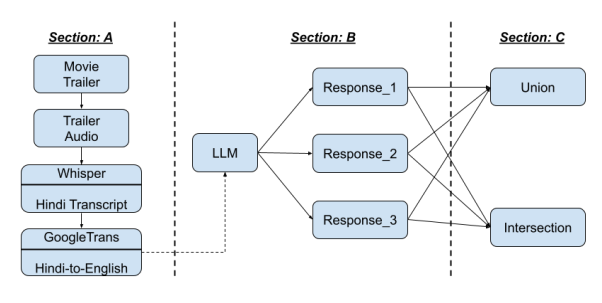Brijraj Singh and Sonal Dabral summarize their paper that was recently accepted at the IJCNN conference in Australia, a premier conference in the area of neural networks theory, analysis and applications.
Our research delves into the effectiveness of four advanced Large Language Models (LLMs): GPT-3.5-turbo-0301, Vicuna, PaLM 2, and Dolly in predicting movie genres and meta-information like directors and cast details for Hindi movies. Traditional Deep Learning models for Recommendation Systems (RS) often require extensive data, but LLMs show promise in mitigating this need. The study focuses on Hindi movies from the Flickscore dataset, particularly analyzing audio transcripts from movie trailers.
Preliminary findings highlight GPT-3.5 as the most proficient LLM in predicting movie meta-information accurately. Despite the complexities involved in predicting diverse aspects like genres and user preferences, GPT-3.5 exhibits promising capabilities. This research contributes to advancing our understanding of LLMs in movie-related tasks and their potential application in RS, indicating progress in user preference comprehension and personalized content recommendations.
The experiments utilize audio information from 510 Hindi movie trailers in the Flickscore dataset, covering various user-movie interactions and preferences. The dataset comprises of movie names, directors, casts, year of release, storylines, and multiple genres. Transcripts of the Hindi audio are translated into English for analysis, forming the corpus for the experiment.
Key research contributions include a) Analyzing the effect of LLMs in predicting Hindi movie genres and meta-information from audio transcripts. b) How well LLMs recall directors and cast based on movie names, year of release, and c) The proficiency of GPT-3.5 in predicting meta-information for newer Hindi movies.
The study’s conclusion highlights GPT-3.5’s superior performance in predicting movie metadata and introduces a decision-making RS utilizing LLM responses for user-movie pair preferences, competing effectively with existing systems.
